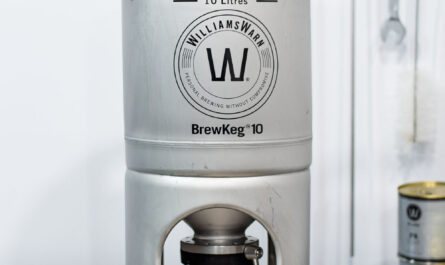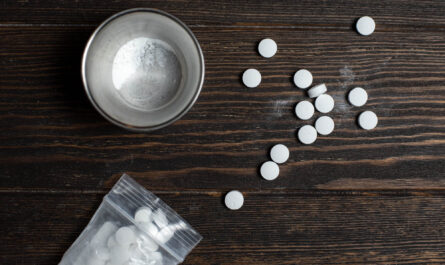A refractometer is a more advanced brewing tool for calculating specific gravity. It has some pros and cons in comparison to using your trusty hydrometer and can be used throughout the brew day when a hydrometer doesn’t always make sense. While a refractometer is not going to replace your hydrometer altogether (my original misconception), it will certainly augment your brew day statistics. Here is the one I have.
When to Use
The biggest caveat with a refractometer is it does not work reliably with alcohol—meaning it can only be used to calculate specific gravity pre-and-post-boil. After you pitch your yeast, a hydrometer is your only option. Once your wort becomes beer, the alcohol will distort the results.
The biggest advantage to a refractometer is how quickly you can take a gravity reading with just a few drops of wort. This is perfect for measuring pre-boil gravity on the fly. This can be used to calculate mash efficiency, which is the percentage of “potential” sugars that are extracted from the grains during the mash. It is typically a percentage in the 80% range and serves as a yardstick for measuring how efficient your mashing process is. These statistics can help you dial in your brewhouse in brewing software like BeerSmith so you have an overall more predictable brew day.

Automatic Temperature Compensation (ATC)
I have a BRIX (0-32°) and Specific Gravity (1.000-1.130) refractometer with automatic temperature compensation (ATC). This eliminates the need to manually temperature-adjust readings between 55 and 85°F. The unit will automatically correct for temperature. This does not mean you can pour hot wort samples onto the refractometer from the mash tun. You should always let the sample cool to 85°F before testing. Luckily it won’t take longer than a few minutes for such a small sample to do so.
Calibrating Your Refractometer
Before you can use your refractometer you must calibrate it with distilled or reverse osmosis (RO) water. Place a few drops of RO water on your refractometer lens and put down the cover. Look through the sight in a brightly lit area and adjust the focus. It helps to point upward towards the sky or at a kitchen light. The blue portion will intersect the white at the SG reading. RO water should be 1.000.
A look inside a refractometer:


If the blue line does not fall on zero or 1.000 with RO water, use a screwdriver to adjust the calibration screw to set the refractometer to zero. You’re now free to move about the brewery. I do not recommend using tap or spring water as you do not know what is in it that could alter your calibration.

Calibrate With a Hydrometer
If you don’t have RO water you can also calibrate your refractometer using the known specific gravity of wort. Find out your temp corrected final gravity using your hydrometer on your next brew day and use that figure to calibrate your refractometer with the same sample.
How to Use a Refractometer
- Take a small sample of wort with the supplied pipette and place it in a cool glass chill to room temp.
- Place a few drops of wort on your refractometer lens and put down the cover.
- Look through the sight in a brightly lit area and adjust the focus. It helps to point upward towards the sky or at a kitchen light.
- The top blue portion will intersect with the bottom white portion at the gravity reading. Record this number, that’s your wort’s specific gravity.






Hi,
I just want to point out that a number of refractometers available cheaply online have used an incorrect calculation to convert from Brix to SG including the one you have bought and used for this article.
12.7 Brix is actually SG 1.051 not 1.055 as in your image above.
Your article does also not discuss the need to apply a correction to wort as the suspended solids in qort affect the result. This can affect results by 4-5% or more. Below is a good reference that explains.
https://homebrew.stackexchange.com/questions/10913/can-a-refractometer-be-used-for-testing-final-gravity
On the note of cheaper refractometer, be wary of those that claim ATC but actually don’t have any mechanism to do so – some have likely just put and ATC sticker on a non-ATC device.
Thanks for helping to better inform the brewing community and ease consider updating your article.
I will look into this asap. Thanks for feedback.